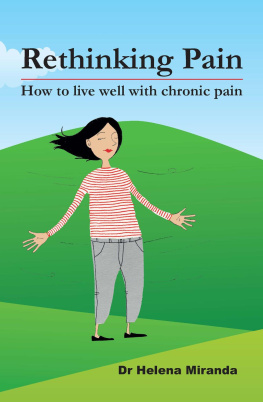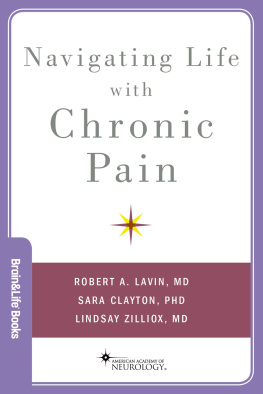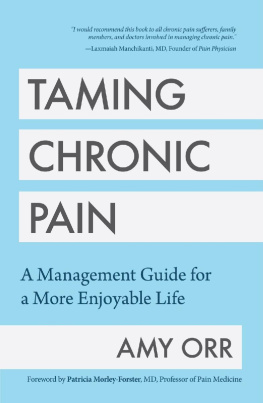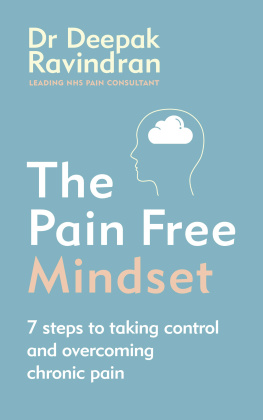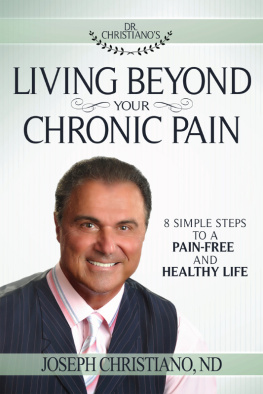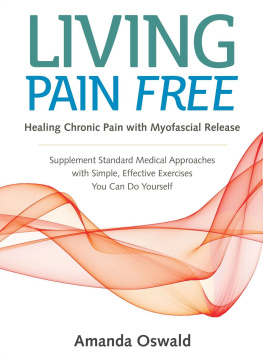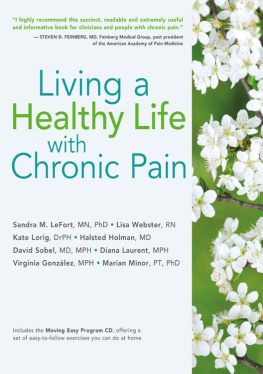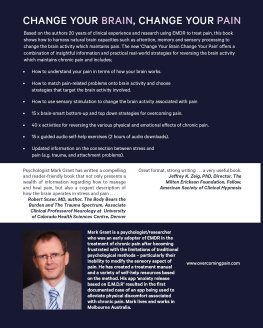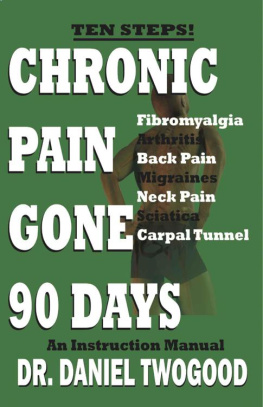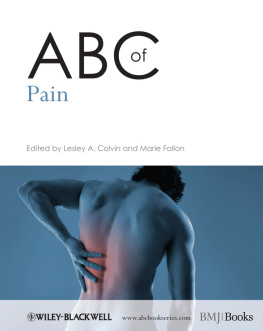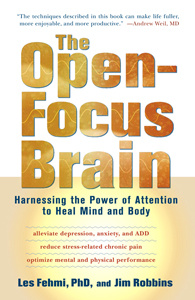Chronic pain is a major public health problem around the world. Approximately 1.5 billion people worldwide are affected. Pain is the most common reason that people seek medical care. It is estimated that chronic pain affects 20% of the population in the United States and Australia, and up to 43% of the population in the UK. In many countries, healthcare costs for treatment of chronic pain outstrip those of cancer and cardiovascular disease combined. It is one of the leading causes of long-term disability.
Over 75% of patients with chronic pain report feeling depressed due to their pain, and over 50% of chronic pain sufferers feel that they have little or no control over their pain.
And yet, chronic pain is still considered a black box in medicine, shrouded in mystery, confusion, and frustration. It is ubiquitous and poorly understood. Chronic pain represents a complex hologram of biomechanical, neurophysiological, neurohormonal and psychophysiological factors. Well-meaning clinicians often feel stymied in understanding and treating these patients. For this and many other reasons, many shy away from treating chronic pain.
In Rethinking Pain: How to Live Well with Chronic Pain, Dr Helena Miranda brings a much-needed roadmap to understanding and treating these challenging conditions. She boils down complex concepts regarding the physiology of chronic pain into user-friendly and accessible information that can help the pain sufferer, as well as their family and friends. She provides a modern, humane and multifaceted guide to understanding pain and its management.
A current buzzword in pain medicine is central sensitization. In other words, ways that the central nervous system can become hypersensitized in chronic pain such that our bodys natural alarm systems become distorted. This helps explain, in part, the myriad of symptoms (including digestive distress, multi-site pain, chemical sensitivity, mood fluctuations, and more) that chronic pain sufferers experience. Dr Miranda tackles this concept in straightforward, no-nonsense language that helps the reader make sense of what previously has been so bewildering and tormenting.
Dr Miranda addresses many related concepts that are crucial in helping the chronic pain sufferer get control of their lives. These include the importance of deep sleep, the power of touch, sensible diet and exercise, and the importance of being discerning about where and how to get accurate health information. She provides a sensible guide for evaluating the appropriate use of medications as a bridge to eventual self-care. Also, I greatly appreciate that her work is evidence-based she lists scientific citations for the topics she covers in each chapter.
A particularly important and often misunderstood notion involves the impact of negative emotions on chronic pain. So many chronic pain sufferers have been through years of going to so many clinics and clinicians trying to get relief. Once they have been through every diagnostic test without significant findings, they may hear that the pain is all in your head. Subsequently, they may understandably feel defensive at any notion that emotions play a role in their pain. Dr Miranda tackles this conundrum skillfully, articulating how unaddressed fear, anger or sadness may serve to further dysregulate the autonomic nervous system and thus worsen real physical pain.
Dr Mirandas biographical details are impressive. She is a physician specialising in occupational medicine in Helsinki, Finland. She has a doctoral degree in pain epidemiology as well as a masters degree in work environmental studies. She has over 40 peer-reviewed publications regarding musculoskeletal pain, its risk factors and effects on work disability. But even more impressive is her personal presence and enthusiasm for pain medicine. I have found her to be passionate in her quest to help patients and families suffering from chronic pain live better and more fully.
Another unique feature of Helenas book is her willingness to share her own personal journey coping with longstanding chronic pain. Patients on the chronic pain journey so often feel isolated and misunderstood. As the reader learns about Helenas personal challenges with pain, they will feel as if someone is finally putting their story into words.
Having worked in the field of chronic pain treatment for over 33 years, I deeply appreciate this invaluable resource for patients and their loved ones. I wish it had been available long ago! Dr Miranda is a beacon of hope for the chronic pain sufferer, and this book will help launch the reader on their journey of healing.
Mark B Weisberg, PHD, ABPP Board Certified Clinical Health Psychologist Diplomate, American Board of Professional Psychology Co-author: Trust Your Gut: Get Lasting Healing from IBS and Other Chronic Digestive Problems Without Drugs Minneapolis, Minnesota, USA
I would like to thank Darren Newman of Darren Newman Employment Law Ltd, UK, for his advice on employers obligations under the Equality Act in the UK and on related matters which I have taken into account in , Keep working, and the Appendix. Please note this book is not intended to be a legal guide and should be broadly applicable in any country, not just the UK.
Dear reader, you have probably been suffering from pain for a long time for months or even years or decades. Perhaps the reason for your pain has never been discovered, or no effective treatment has been found. Youve tried many approaches, taken your share of medication, exercised and rested. You may have had at least one operation. Youve fought to be able to keep working and may even have lost this battle to pain. A sense of hopelessness overcomes you at times: wont this ever end? You perhaps feel very much alone with your pain.
This book is meant for you. In the UK, the British Pain Societys most recent survey revealed that around 28 million adults are living with chronic pain; in Europe, around 100 million do; globally, its about one billion people. You are not alone.
Your pain also affects the people around you: your partner, family members, relatives, friends, colleagues, managers at work, healthcare professionals and other people who come into contact with you as a chronic pain sufferer through their work, including hairdressers, exercise instructors and sales assistants. Ive written this book also for people who seek a better understanding of the phenomenon we call chronic pain and want to support pain sufferers in practice.
In my work as a doctor, I have provided care for working-aged people trying to get on with life despite their pain. Ive also had a long career conducting scientific research on pain. Research has made tremendous progress in the last 1015 years, and our understanding of pain has changed. It could even be said that a small-scale scientific revolution has occurred. I dont know of any other common symptom a symptom affecting everyone for which new scientific knowledge would have been equally revolutionary.
Youre entitled to accurate information about pain and about how you can take care of yourself best. For this book, Ive collected together the scattered new scientific knowledge and tried to make it easy to grasp.
All pain is experienced in the brain. To understand this, Ill take you on a short trip through the fascinating world of brain research. Its important to appreciate what happens in the brain when experiencing pain, and what changes prolonged pain causes there.
This book makes its most important contribution at the practical level. I want to provide you with pain management tools that work well and are easy to use tools that are based on scientific knowledge and that give you the means to feel better. You can start using these tools right away even though the causes of your pain may be unclear and further investigations may be on the horizon.

